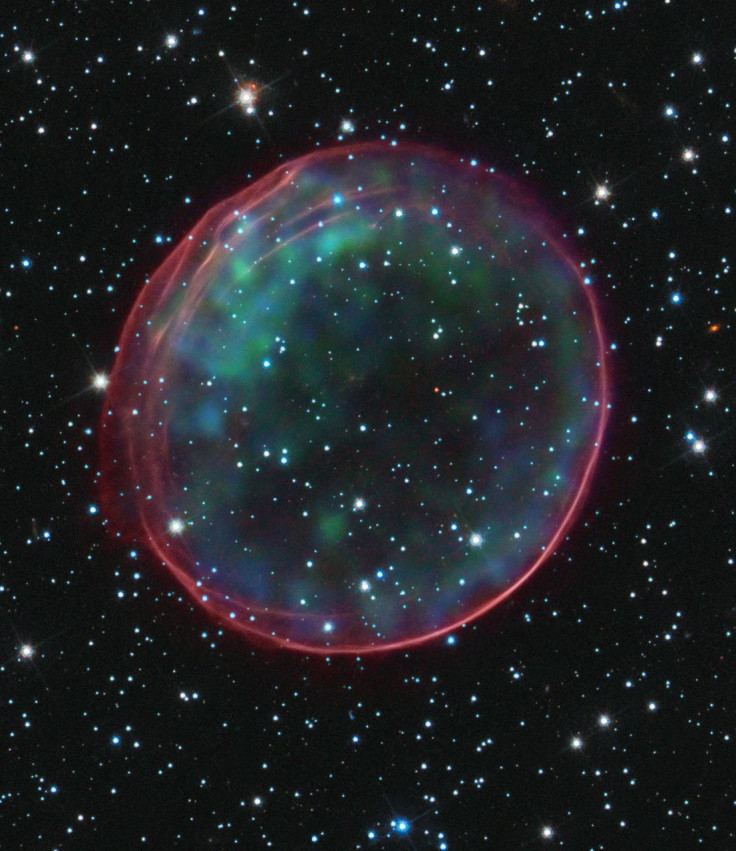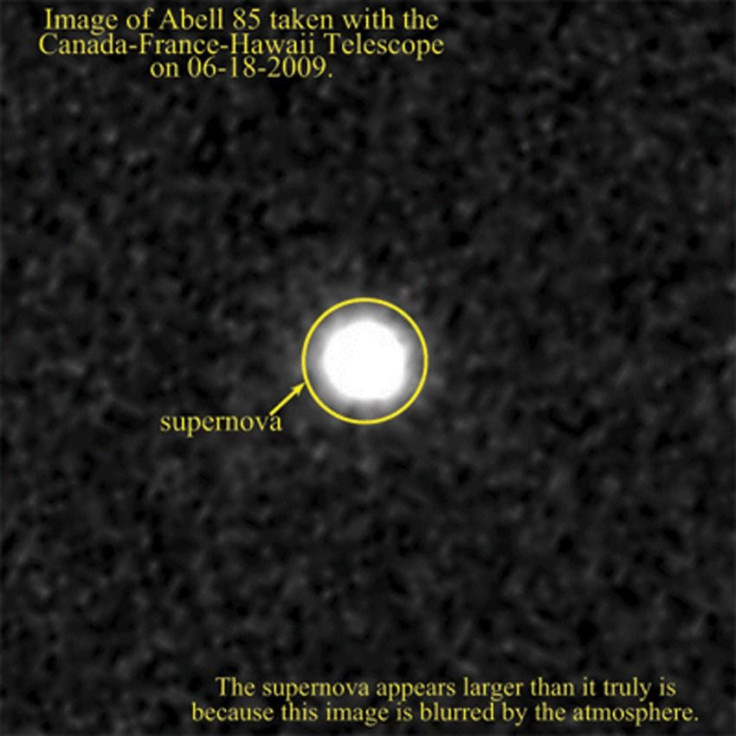Hubble Captures Lonely Deaths Of Exiled Stars In Deep, Empty Space

Stars flung out of their parent galaxies are condemned to lead a lonely life, and an even lonelier death in the vast emptiness of space when they eventually run out of fuel. If these stars are large enough, they detonate in a massive supernova, far removed from the nearest galaxies.
According to new images gathered using the Hubble Space Telescope (HST), this is the fate that befell three stars first discovered between 2008 and 2010 using the Canada-France-Hawaii Telescope on Mauna Kea in Hawaii. While previous observations had failed to rule out the possibility that these supernovae were embedded in a faint galaxy, sharper images captured by the HST show that these stellar remnants are truly solitary.
These so-called intracluster stars, located more than 300 light-years from their nearest neighbors, provide scientists an important clue to what exists in the vast spaces between galaxies, and can also help astronomers understand the formation and evolution of galactic clusters.
“We have provided the best evidence yet that intracluster stars truly do explode as Type Ia supernovae and confirmed that hostless supernovae can be used to trace the population of intracluster stars, which is important for extending this technique to more distant clusters,” Melissa Graham from the University of California, Berkeley, lead author of the study, detailing the findings, said in a statement last week.

Since Type Ia supernovae occur in a binary system -- two stars orbiting one another -- scientists believe that these exiled stars might have had company when they were alive.
“This is no love story, though,” Graham said about the study, which has been accepted for publication in the Astrophysical Journal. “The companion was either a lower-mass white dwarf that eventually got too close and was tragically fragmented into a ring that was cannibalized by the primary star, or a regular star from which the primary white dwarf star stole sips of gas from its outer layers. Either way, this transfer of material caused the primary to become unstably massive and explode as a Type Ia supernova.”
Scientists believe that if these vagabond stars ever harbored planets with life on them, their inhabitants would have looked up at a night sky completely devoid of bright stars, populated “only by the occasional faint and fuzzy blobs of the nearest and brightest cluster galaxies.”
© Copyright IBTimes 2025. All rights reserved.






















